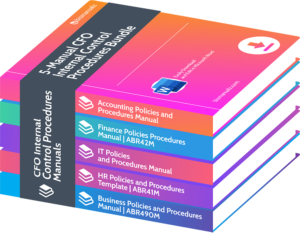What Should a CFO Know About Supply Chain Finance Solutions?

As a CFO, you are responsible for overseeing the financial health of your company. One crucial aspect of this is managing the supply chain and ensuring that it operates efficiently and cost-effectively. However, with increasingly complex supply chains, this task can be daunting. In this article, we will explore the importance of supply chain finance solutions and how they can help alleviate these challenges. What should a CFO know about supply chain finance solutions?
The Role of a CFO in Supply Chain Finance
The importance of a CFO in supply chain finance cannot be overstated, as they play a crucial role in optimizing financial performance and ensuring the smooth operation of the supply chain.
The CFO is responsible for overseeing financial planning, risk management, and strategic decision-making in regards to supply chain financing. They work closely with other departments to streamline processes, reduce costs, and improve cash flow.
Utilizing innovative financing solutions, such as supply chain finance programs or dynamic discounting, the CFO can unlock working capital, strengthen supplier relationships, and enhance overall efficiency within the supply chain. To excel in this position, the CFO should possess a thorough understanding of supply chain dynamics, financial analysis, and risk assessment.
What is Supply Chain Finance?
Supply chain finance is a term used to describe financial solutions that aim to optimize cash flow and working capital throughout the supply chain. This involves working with both suppliers and buyers to improve payment terms and provide access to financing options.
Such solutions benefit suppliers by allowing them to receive early payment for their invoices, while buyers can extend their payment terms. Implementing supply chain finance can lead to improved liquidity, reduced risk, and stronger relationships among all parties involved. It is a valuable tool for CFOs to enhance value and efficiency in their organization’s supply chain operations.
Pro-tip: By implementing supply chain finance solutions, organizations can achieve cost savings, improve supplier relationships, and enhance overall financial performance.
How Does Supply Chain Finance Work?
Supply chain finance involves several steps that facilitate the flow of funds throughout the supply chain. Here is a list of steps that explain how supply chain finance works:
- Identification: The CFO identifies key suppliers and their financing needs.
- Solution selection: The CFO chooses the appropriate supply chain finance solution based on the specific requirements of the suppliers.
- Communication: The CFO communicates and collaborates with the suppliers to explain the benefits and details of the chosen finance solution.
- Supplier onboarding: The CFO ensures a smooth onboarding process for suppliers onto the finance platform, including necessary documentation and agreements.
- Data management: The CFO ensures efficient management and integration of financial data between the suppliers and the finance provider.
- Funds disbursement: Once the finance solution is in place, funds are disbursed to the suppliers based on agreed terms and conditions.
- Transaction monitoring: The CFO closely monitors the financial transactions and performance of the suppliers to ensure compliance and timely repayments.
What Are the Benefits of Supply Chain Finance?
As a Chief Financial Officer, it is crucial to have a comprehensive understanding of supply chain finance solutions and their potential benefits. In this section, we will discuss the advantages that supply chain finance can bring to a company.
From improved cash flow to enhanced supplier relationships, we will explore the various ways in which this financial strategy can positively impact a business. So, let’s dive into the benefits of supply chain finance and how they can help your company thrive.
1. Improved Cash Flow
Improved cash flow is a major advantage of incorporating supply chain finance solutions. To achieve this, CFOs should follow these steps:
- Evaluate the current cash flow situation and identify areas for enhancement.
- Implement invoice financing to expedite cash inflow by selling invoices to a finance provider.
- Utilize supply chain financing programs to access early payment options and improve cash flow.
- Consider dynamic discounting to incentivize suppliers to offer early payment discounts.
- Communicate and collaborate with suppliers to negotiate favorable payment terms and minimize cash flow bottlenecks.
A real-life example of improved cash flow through supply chain finance can be seen in the case of Dell. By implementing supply chain finance solutions, Dell was able to extend payment terms with suppliers, resulting in a better cash flow position and allowing them to invest in innovation and growth.
2. Reduced Cost of Capital
Reduced cost of capital is one of the main advantages of implementing supply chain finance solutions for CFOs. By utilizing these solutions, CFOs can effectively lower the cost of borrowing and accessing working capital.
Here are the steps to achieve a reduced cost of capital:
- Identify the financing needs of your supply chain
- Analyze the cost of capital for each available financing option
- Compare and select the most cost-effective supply chain finance solution
- Negotiate favorable rates and terms with financial institutions or providers
- Implement the chosen solution and monitor its impact on the cost of capital
- Continuously review and optimize supply chain finance strategies
In a real-life example, a CFO of a manufacturing company successfully implemented supply chain financing, resulting in a 15% reduction in the cost of capital. This allowed the company to make investments in new equipment, improve cash flow, and negotiate better terms with suppliers. The reduced cost of capital also positioned the company for future growth and enhanced its overall financial performance.
3. Enhanced Supplier Relationships
Enhancing supplier relationships is a crucial aspect of implementing supply chain finance solutions. To achieve this, CFOs should consider the following steps:
- Open and transparent communication with suppliers regarding the benefits of supply chain finance.
- Collaborate with suppliers to understand their specific needs and requirements.
- Provide timely payments to suppliers, improving their cash flow and reducing financial strain.
- Offer flexible payment terms that align with suppliers’ cash flow cycles.
- Establish trust and build long-term partnerships by honoring commitments and maintaining consistent communication.
By taking these steps, CFOs can foster strong relationships with suppliers, which can lead to enhanced collaboration, increased efficiency, and reduced supply chain risks.
What Are the Different Types of Supply Chain Finance Solutions?
Supply chain finance solutions offer a variety of options for companies to optimize their cash flow and improve their supply chain management. In this section, we will discuss the different types of supply chain finance solutions that are available for CFOs to consider.
From invoice financing to supply chain financing programs to dynamic discounting, each solution offers unique benefits and can be tailored to meet the specific needs of a company. Let’s dive into these options and see how they can benefit your organization.
1. Invoice Financing
Invoice financing is a type of supply chain finance solution that allows businesses to obtain immediate cash flow by using their outstanding invoices as collateral. Here is a step-by-step process for implementing this method:
- Identify the need: Evaluate your cash flow situation and determine if invoice financing is the right solution for your business.
- Choose a provider: Research and select a reputable invoice financing provider that offers favorable terms and rates.
- Submit invoices: Provide the selected invoices to the financing provider for verification and approval.
- Receive funding: Once approved, the financing provider will advance a percentage of the invoice value to your business.
- Customer payment: Your customers will pay the invoice amount directly to the financing provider.
- Settlement: The financing provider will deduct their fees and release the remaining funds to your business.
- Repeat process: Invoice financing can be a continuous solution to improve cash flow as new invoices are generated.
2. Supply Chain Financing Programs
Supply chain financing programs are a crucial tool for optimizing cash flow and strengthening relationships with suppliers. To successfully implement these programs, CFOs should follow a few key steps:
- Assess Supplier Landscape: Identify key suppliers and evaluate their financing needs.
- Select the Right Program: Choose the appropriate supply chain financing program that aligns with the specific needs and goals of both your organization and suppliers.
- Communicate and Collaborate: Establish open lines of communication with suppliers to educate them about the benefits of the program and encourage their participation.
By following these steps, CFOs can effectively utilize supply chain financing programs to improve working capital, reduce costs, and foster stronger relationships with suppliers. It is important to regularly review and adapt the program as needed to ensure ongoing success.
3. Dynamic Discounting
Dynamic discounting is a supply chain finance solution that offers early payment discounts to suppliers who promptly pay their invoices. To successfully implement dynamic discounting, follow these steps:
- Identify suppliers who are interested in participating in the dynamic discounting program.
- Create a system to calculate and present discounts based on the timing of payment.
- Establish clear channels of communication with suppliers to inform them about the dynamic discounting program.
- Integrate the dynamic discounting solution into your current payment systems or utilize a third-party platform.
- Monitor and track payment performance to ensure suppliers receive their discounts in a timely manner.
- Continuously evaluate and improve the dynamic discounting program to maximize benefits for both the company and its suppliers.
How Can CFOs Implement Supply Chain Finance Solutions?
As a CFO, implementing supply chain finance solutions can greatly benefit your company’s financial health and operational efficiency. However, it is important to have a strategic plan in place for successful implementation. In this section, we will discuss the steps that CFOs can take to effectively implement supply chain finance solutions.
These include identifying key suppliers and their specific needs, selecting the appropriate supply chain finance solution, and effectively communicating and collaborating with suppliers. Let’s dive into each of these steps in more detail.
1. Identify Key Suppliers and their Needs
Identifying key suppliers and understanding their needs is a crucial step for CFOs when implementing supply chain finance solutions. Here are the steps to follow:
- Evaluate your current supplier base and identify the suppliers who have the most impact on your supply chain.
- Conduct a thorough analysis to understand the financial stability, payment terms, and cash flow needs of these key suppliers.
- Engage in open communication with the suppliers to gather information about their challenges, goals, and potential areas for improvement.
- Collaborate with the suppliers to identify opportunities for supply chain finance solutions that can address their specific needs.
- Consider the suppliers’ preferences and capabilities when choosing the most suitable supply chain finance solution.
- Ensure that the selected solution aligns with your organization’s financial goals and objectives.
- Continuously monitor and evaluate the effectiveness of the supply chain finance solutions implemented with these key suppliers.
2. Choose the Right Supply Chain Finance Solution
Choosing the right supply chain finance solution is crucial for CFOs to optimize their company’s financial operations. To help guide you in this process, here are the steps to consider:
- Assess your company’s specific needs and objectives.
- Evaluate the different types of supply chain finance solutions available, such as invoice financing, supply chain financing programs, and dynamic discounting.
- Consider the scalability and flexibility of each solution to ensure it can accommodate your company’s growth and changing needs.
- Analyze the costs and fees associated with each solution to determine their financial feasibility.
- Review the technological capabilities and integration options of the solutions to ensure compatibility with your company’s existing systems.
- Seek recommendations and feedback from trusted industry experts and peers to gain insights into the effectiveness and reliability of each solution.
- Negotiate terms and conditions with potential solution providers, including pricing, contract length, and implementation timelines.
- Make a well-informed decision based on a comprehensive analysis of the above factors to select the right supply chain finance solution for your company.
3. Communicate and Collaborate with Suppliers
Communicating and collaborating with suppliers is crucial for the successful implementation of supply chain finance solutions. Here are some steps to consider:
- Establish clear and open lines of communication with suppliers to discuss the benefits and details of the supply chain finance program.
- Share information about the program’s objectives, requirements, and any necessary changes to existing processes.
- Collaborate with suppliers to understand their needs and concerns, and address any potential challenges or obstacles.
- Provide training and support to suppliers to ensure they have the necessary knowledge and resources to participate in the program.
- Regularly communicate with suppliers to provide updates on the program’s progress and address any issues that may arise.
By fostering effective communication and collaboration with suppliers, CFOs can ensure the successful implementation of supply chain finance solutions, leading to improved cash flow, reduced costs, and enhanced supplier relationships.
What Are the Challenges and Risks of Supply Chain Finance?
As a CFO, understanding the challenges and risks associated with supply chain finance solutions is crucial in making informed decisions for your company. In this section, we will discuss the various obstacles that may arise when implementing supply chain finance, including supplier onboarding and adoption, data management and integration, and counterparty risk. By being aware of these potential challenges, you can better navigate the complex world of supply chain finance and ensure successful outcomes for your organization.
1. Supplier Onboarding and Adoption
Supplier onboarding and adoption are crucial elements when implementing supply chain finance solutions. To ensure a seamless transition, it is important to follow these steps:
- Identify key suppliers and their financial needs.
- Educate suppliers on the advantages of supply chain finance and address any concerns they may have.
- Assist suppliers in the onboarding process by providing necessary documentation and guidance.
- Collaborate with suppliers to integrate their systems with the supply chain finance platform.
- Offer training and support to suppliers to help them navigate the new finance solution.
By streamlining the onboarding and adoption process, CFOs can maximize the benefits of supply chain finance while minimizing disruptions for suppliers. Effective communication and collaboration are essential to ensure a successful implementation.
2. Data Management and Integration
Efficient data management and integration are vital components for successful supply chain finance implementations. Proper data management ensures the accurate and timely processing of financial transactions and aids in monitoring and tracking supplier performance.
Integration of data across different systems allows for seamless information flow and provides real-time visibility into the supply chain. CFOs should invest in robust technology platforms that can handle large amounts of data and integrate with existing systems. Establishing data governance practices and data sharing agreements with suppliers are also crucial for effective data management and integration in supply chain finance.
A multinational company faced data management and integration challenges in their supply chain finance program in 2019. To address this, they implemented a centralized data management system, allowing for real-time data sharing between their finance team and suppliers.
This streamlined the invoicing and payment process, resulting in reduced errors and delays. By integrating their systems, they gained valuable insights into supplier performance and identified opportunities for cost reduction. Ultimately, the company experienced improved cash flow and strengthened supplier relationships, highlighting the significance of data management and integration in supply chain finance.
3. Counterparty Risk
Counterparty risk is a crucial factor to consider in supply chain finance. To mitigate this risk, CFOs should take the following steps:
- Conduct thorough due diligence on potential suppliers and partners to evaluate their financial stability and reliability.
- Establish clear contractual terms and conditions that clearly outline the responsibilities and obligations of all parties involved.
- Implement robust monitoring and control mechanisms to track the performance and financial health of counterparties.
- Diversify the supply chain by collaborating with multiple suppliers to reduce dependence on a single counterparty.
- Stay informed about market trends and developments that may impact the financial stability of counterparties.
By following these steps, CFOs can minimize the risks associated with counterparty failure and ensure the smooth operation of their supply chain finance initiatives.
CFO Know About Supply Chain Finance Solutions
It is impossible to exaggerate the significance of a CFO in supply chain financing since they are essential to both maximizing financial performance and guaranteeing the seamless operation of the chain. In terms of supply chain financing, the CFO is in charge of managing risk, financial planning, and strategic decision-making. To increase cash flow, cut expenses, and streamline procedures, they collaborate closely with other departments.
By employing cutting-edge financing strategies like dynamic discounting or supply chain finance programs, the CFO can improve supplier relationships, free up working capital, and increase supply chain efficiency as a whole. The CFO needs to be extremely knowledgeable about risk assessment, financial analysis, and supply chain dynamics in order to succeed in this role.
Frequently Asked Questions

What should a CFO Know about Supply Chain Finance Solutions?
A CFO should know that supply chain finance solutions provide a way for companies to access financing to improve their cash flow and optimize their supply chain operations.
What are the benefits of implementing supply chain finance solutions?
By implementing supply chain finance solutions, a CFO can improve their company’s working capital, reduce their supply chain risk, and strengthen relationships with their suppliers.
How does supply chain finance work?
Supply chain finance allows a company to extend their payment terms with their suppliers, while still ensuring that their suppliers receive payment quickly through the financing provided by a third party.
What types of companies can benefit from supply chain finance solutions?
Any company that has a supply chain and relies on suppliers can benefit from implementing supply chain finance solutions. This includes both small and large companies in various industries.
What should a CFO consider when choosing a supply chain finance provider?
A CFO should consider factors such as the provider’s reputation, fees, technology capabilities, and customer service when choosing a supply chain finance provider. It is important to choose a provider that aligns with the company’s goals and values.
Can supply chain finance solutions help improve a company’s credit rating?
Yes, by optimizing their supply chain and improving their cash flow, a company’s credit rating can improve. This can lead to better access to financing and lower interest rates.
















Leave a Reply